Authors:
ABSTRACT
Aim
AIM The purpose of this in vivo study was to evaluate and compare the efficacy of different obturating methods
used in primary teeth, when obturated using a combination of zinc oxide and iodoform paste (Endoflas F.S.).
MATERIALS AND METHODS A group of 29 patients aged 3-9 years and a total of 64 teeth were selected. These 64 teeth (32
anterior teeth=32 canals, and 32 posterior teeth=80 canals) were randomly divided into 4 groups. Teeth were obturated with
Lentulo spiral, pressure syringe, bi-directional spiral and Pastinject. Post-operative evaluation was done for: quality of canal
obturation, (underfilled, optimally filled, overfilled) and presence of voids.
RESULTS Pastinject exhibited the highest number of optimally filled canals, while the highest number of underfilled canals
were observed with bi-directional spiral, and the highest number of overfilled canals were observed with pressure syringe. A
minimum number of voids was present in canals filled with the Pastinject technique and pressure syringe.
CONCLUSION These results suggest that Pastinject was the most effective technique for obturation of primary
teeth.
PLUMX METRICS
Publication date:
Keywords:
Issue:
Vol.14 – n.2/2013
Page:
Publisher:
Cite:
Harvard: R. Grover, M. Mehra, I. K. Pandit, N. Srivastava, N. Gugnani, M. Gupta (2013) "Clinical efficacy of various root canal obturating methods in primary teeth: a comparative study", European Journal of Paediatric Dentistry, 14(2), pp104-108. doi:
Copyright (c) 2021 Ariesdue

This work is licensed under a Creative Commons Attribution-NonCommercial 4.0 International License.
